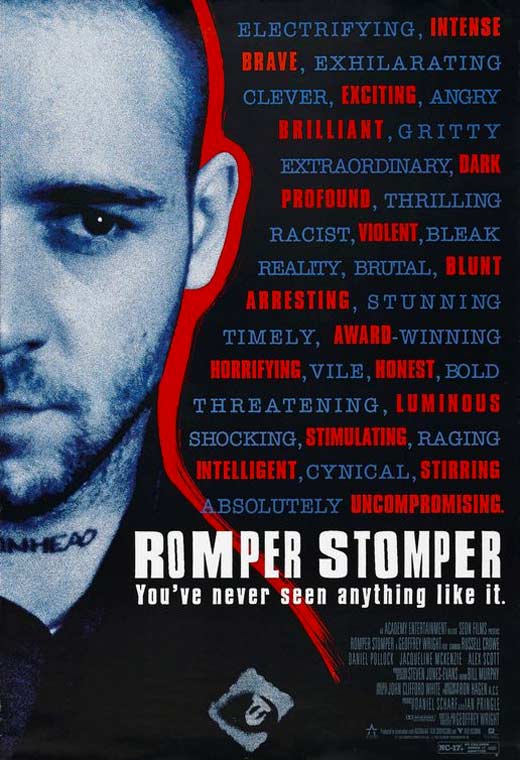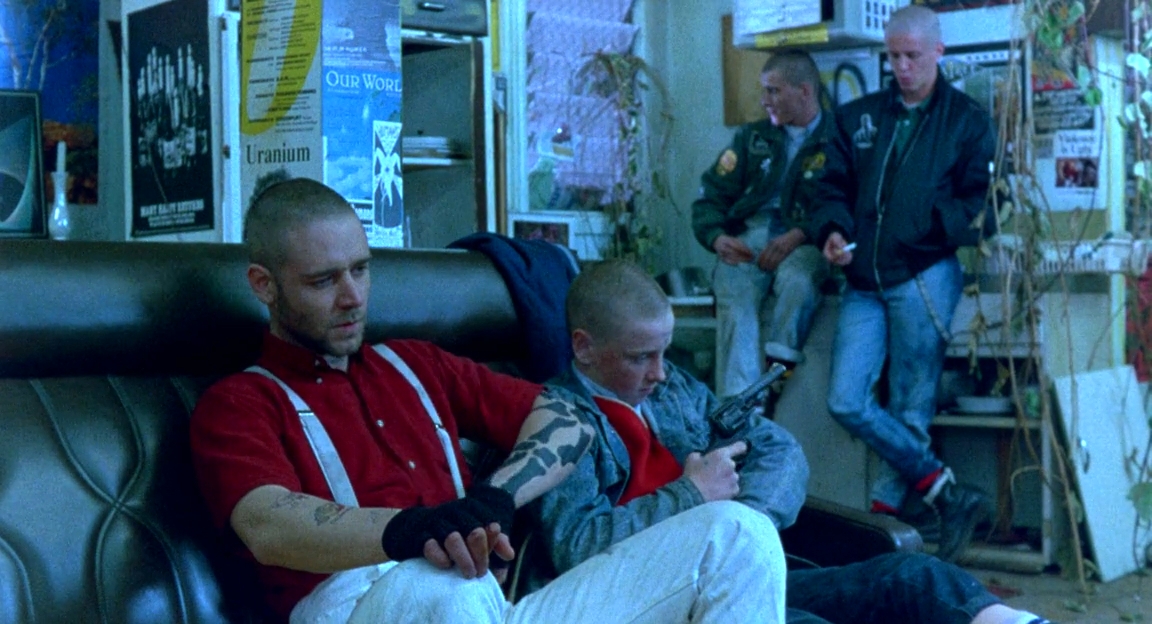Romper Stomper Fight: A Deep Dive Into The Controversial World Of Australian Skinhead Violence
The term "Romper Stomper fight" has become synonymous with a dark chapter in Australia's history, particularly tied to the infamous skinhead gang that dominated the late 1980s and early 1990s. The Romper Stompers were not just another street gang; they represented a radicalized movement that sought to spread fear and violence across Melbourne. This article aims to dissect the origins, ideology, and impact of the Romper Stompers, while exploring the brutal reality of their confrontations.
The Romper Stompers emerged during a period of social and economic upheaval in Australia, where unemployment, racism, and xenophobia were rampant. Their violent confrontations, often referred to as "Romper Stomper fights," became a defining characteristic of their existence. These fights were not merely random acts of violence but were fueled by a deep-seated hatred towards immigrants, ethnic minorities, and political dissenters.
Understanding the phenomenon of Romper Stomper fights is crucial to comprehending the broader implications of hate groups and their influence on society. By examining the cultural, social, and historical context surrounding these events, we can gain valuable insights into the mechanisms that drive such extremism and the measures needed to counteract them.
Read also:Emmett J Scanlan The Life And Achievements Of A Remarkable Leader
Table of Contents
- Biography of the Romper Stompers
- Origins of the Romper Stompers
- Ideology and Motivations
- Romper Stomper Fight: The Reality
- Representation in Media
- Impact on Australian Society
- Legal Consequences
- Countermeasures Against Extremism
- Statistical Analysis of Violent Acts
- Conclusion
Biography of the Romper Stompers
Key Members and Leadership Structure
The Romper Stompers were led by a charismatic figure named Garry "Eggsy" Webber, whose leadership style was both authoritarian and ruthless. Under his command, the gang grew in numbers and influence, attracting disenchanted youth who were drawn to their radical ideology. Below is a brief overview of the key members:
| Name | Role | Years Active |
|---|---|---|
| Garry "Eggsy" Webber | Leader | 1987-1994 |
| Andrew "Andy" Anderson | Lieutenant | 1988-1992 |
| Paul "Pig" Martin | Enforcer | 1989-1993 |
Origins of the Romper Stompers
The roots of the Romper Stompers can be traced back to the late 1980s, a time when Australia was experiencing significant social and economic challenges. High unemployment rates, particularly among the youth, created a fertile ground for the rise of extremist groups. The Romper Stompers capitalized on this discontent, offering a sense of belonging and purpose to disillusioned individuals.
Ideology and Motivations
Racial Supremacy and Xenophobia
At the core of the Romper Stompers' ideology was a belief in racial supremacy and a deep-seated hatred for immigrants. They viewed non-European immigrants as a threat to the "purity" of Australian society and sought to drive them out through intimidation and violence. This belief system was reinforced by their association with international white supremacist movements.
Romper Stomper Fight: The Reality
The Romper Stomper fights were characterized by their brutal and often unprovoked nature. These confrontations were not limited to rival gangs but also targeted innocent civilians, particularly those of Asian descent. The violence was meticulously planned, with the gang often gathering intelligence on their targets before launching an attack.
- Use of weapons such as bats and knives
- Coordinated group attacks
- Targeting vulnerable individuals
Representation in Media
The Film "Romper Stomper"
The 1992 film "Romper Stomper," directed by Geoffrey Wright, brought the story of the Romper Stompers to a wider audience. While the film was praised for its raw depiction of gang violence, it also faced criticism for potentially glorifying the actions of the gang. Despite this, it remains a powerful tool for understanding the socio-political climate of the time.
Impact on Australian Society
The presence of the Romper Stompers had a profound impact on Australian society, heightening tensions between different ethnic groups and fueling debates on multiculturalism. The government was forced to take action, implementing stricter laws and increasing police presence in areas affected by gang violence.
Read also:Milla Chats Nude Understanding The Controversy And Facts
Legal Consequences
Many members of the Romper Stompers faced severe legal repercussions for their actions. Garry Webber, the gang's leader, was sentenced to a lengthy prison term for his involvement in numerous violent crimes. The legal system played a crucial role in dismantling the gang and sending a strong message against hate-driven violence.
Countermeasures Against Extremism
Community Initiatives and Education
In response to the rise of extremist groups like the Romper Stompers, various community initiatives were launched to promote tolerance and understanding. Educational programs focused on teaching young people about the dangers of hate speech and the importance of embracing diversity.
Statistical Analysis of Violent Acts
Data collected by law enforcement agencies reveal a disturbing trend of increasing violent incidents linked to hate groups during the peak years of the Romper Stompers' activity. According to a report by the Australian Institute of Criminology:
- Violent hate crimes increased by 30% between 1988 and 1992
- 70% of victims were from ethnic minority groups
- 90% of incidents involved group attacks
Conclusion
The phenomenon of Romper Stomper fights represents a dark period in Australia's history, characterized by hate, violence, and division. By understanding the factors that contributed to the rise of the Romper Stompers, we can work towards creating a more inclusive and tolerant society. We urge our readers to reflect on the lessons learned from this era and take an active role in combating extremism in all its forms.
Feel free to share your thoughts in the comments section below or explore other articles on our website for more insights into social and historical issues.



